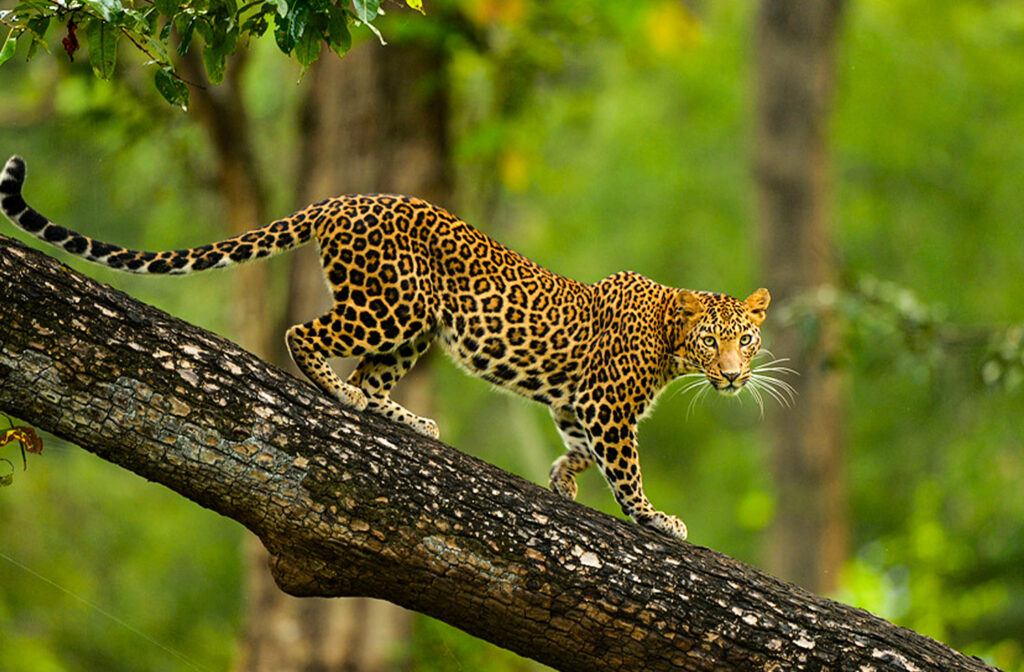
Introduction: Nestled in the verdant landscapes of Karnataka lies a sanctuary of unparalleled beauty and biodiversity – Nagarhole National Park. Renowned as one of India’s premier wildlife reserves and a haven for nature enthusiasts, this sprawling wilderness is celebrated for its rich biodiversity, stunning landscapes, and cultural heritage. In this extensive exploration, we embark on a journey through the jungles of Nagarhole, uncovering its ecological significance, conservation efforts, and the magnificent creatures that call this sanctuary home.
History and Cultural Heritage: The history of Nagarhole National Park is deeply rooted in the traditions and customs of the indigenous communities that have inhabited the region for centuries. The park’s name, “Nagarhole,” translates to “Snake River” in the local Kannada language, a reference to the meandering streams and rivers that flow through its heart. For generations, the forests of Nagarhole have been revered as sacred sanctuaries of nature and a symbol of Karnataka’s cultural heritage.
In 1955, Nagarhole was declared a wildlife sanctuary, and later designated as a national park in 1988. Over the years, the park has gained recognition for its conservation efforts and its role in protecting the region’s iconic wildlife species, particularly the majestic Asian elephant. Today, Nagarhole stands as a testament to India’s commitment to wildlife conservation and serves as a sanctuary for the region’s rich biodiversity.
Ecological Significance: At the heart of Nagarhole National Park lies its diverse ecosystems, which encompass tropical forests, grasslands, and meandering rivers that provide habitat for a wide variety of flora and fauna. The park is home to over 270 species of birds, including rare and endemic species such as the Malabar trogon, great hornbill, and white-bellied woodpecker.
However, it is the Asian elephant (Elephas maximus) that stands as the park’s most iconic resident and a symbol of its conservation success. Nagarhole is renowned for having one of the highest densities of elephants in India, with over 1,000 individuals believed to inhabit its forests. In addition to elephants, the park is also home to a variety of other wildlife species, including tigers, leopards, sloth bears, and deer.
Conservation Efforts and Challenges: Despite its protected status, Nagarhole National Park faces numerous conservation challenges, including habitat loss, human-wildlife conflict, and poaching. Encroachment by human settlements, agricultural expansion, and infrastructure development threaten to degrade the park’s fragile ecosystems and disrupt the natural balance of its wildlife populations.
To address these challenges, the park authorities, along with conservation organizations and local communities, have implemented a range of conservation initiatives aimed at protecting Nagarhole’s biodiversity and promoting sustainable development in the region. These initiatives include habitat restoration projects, anti-poaching patrols, and community-based conservation programs that engage local communities in wildlife protection efforts while providing alternative livelihoods.
Visitor Experience and Tourism: For wildlife enthusiasts and nature lovers, Nagarhole National Park offers a range of opportunities to experience the wonders of the natural world up close. Visitors can explore the park’s diverse landscapes and ecosystems through jeep safaris, guided nature walks, and birdwatching tours led by experienced naturalists and guides. The park also offers opportunities for photography and wildlife observation, with designated viewpoints and watchtowers strategically located to provide visitors with optimal vantage points for spotting elephants and other wildlife.
Accommodation options in and around Nagarhole range from luxury resorts and eco-lodges to budget guesthouses and tented camps, catering to a wide range of preferences and budgets. Whether seeking a luxurious retreat amid the tranquility of nature or a rustic camping experience under the stars, visitors to Nagarhole National Park are sure to find accommodations that suit their needs and preferences.
In addition to its natural attractions, Nagarhole is also home to a number of cultural and historical landmarks, including ancient temples, tribal villages, and colonial-era bungalows that offer insights into the region’s rich history and heritage. From the historic Iruppu Falls to the sacred Brahmagiri Hills, the park offers visitors a glimpse into Karnataka’s vibrant cultural tapestry and the timeless allure of its wilderness landscapes.
Conclusion: In the heart of Karnataka’s lush forests lies a sanctuary of unparalleled beauty and biodiversity – Nagarhole National Park. From the majestic elephants that roam its jungles to the ancient temples and colonial-era bungalows that dot its landscape, Nagarhole is a testament to the enduring harmony between man and nature. As visitors explore its tranquil forests and meandering rivers, they are sure to be captivated by the timeless beauty and natural splendor of this iconic wilderness sanctuary.




